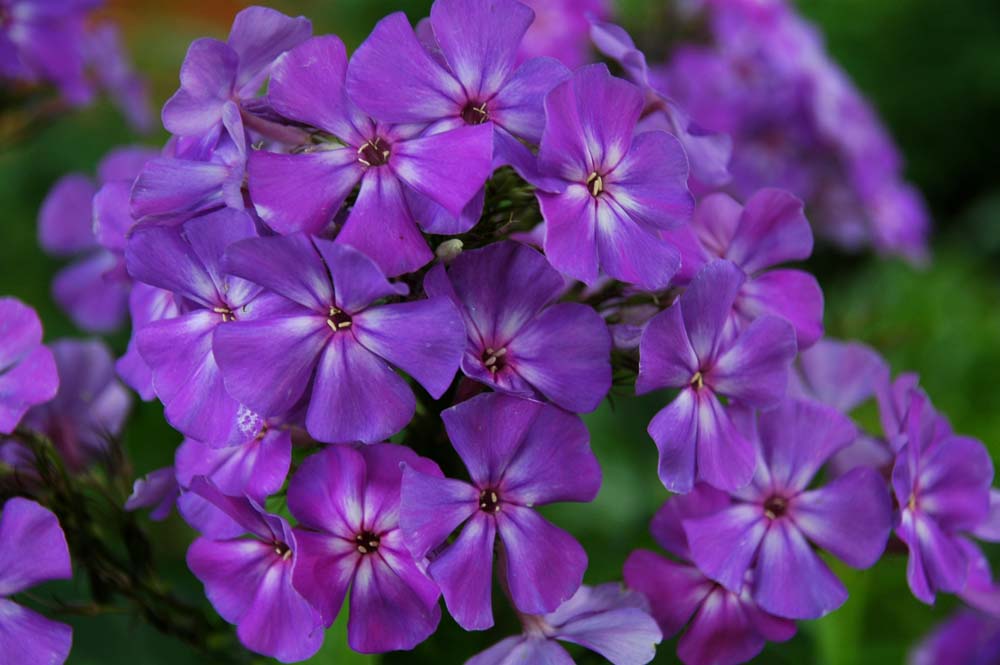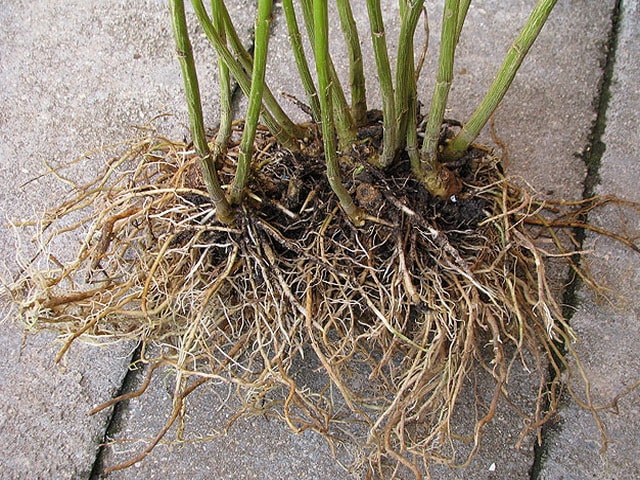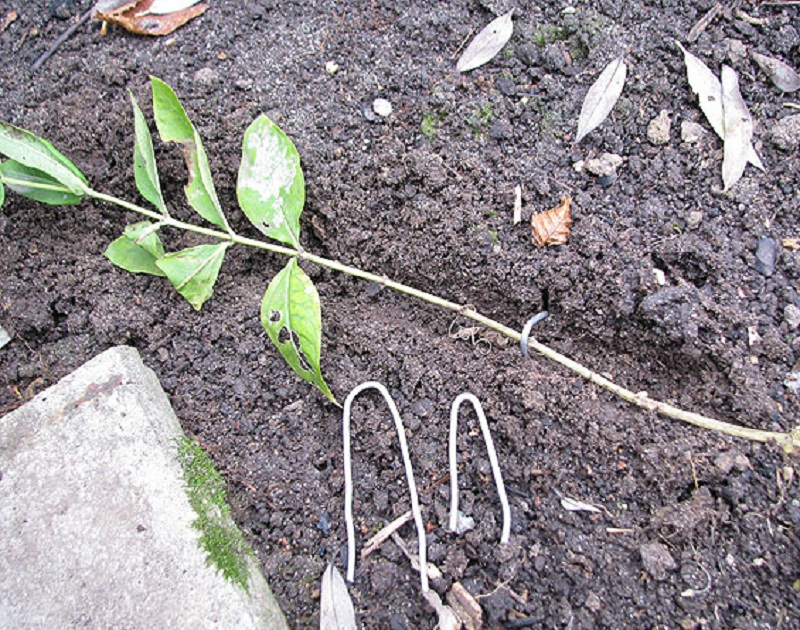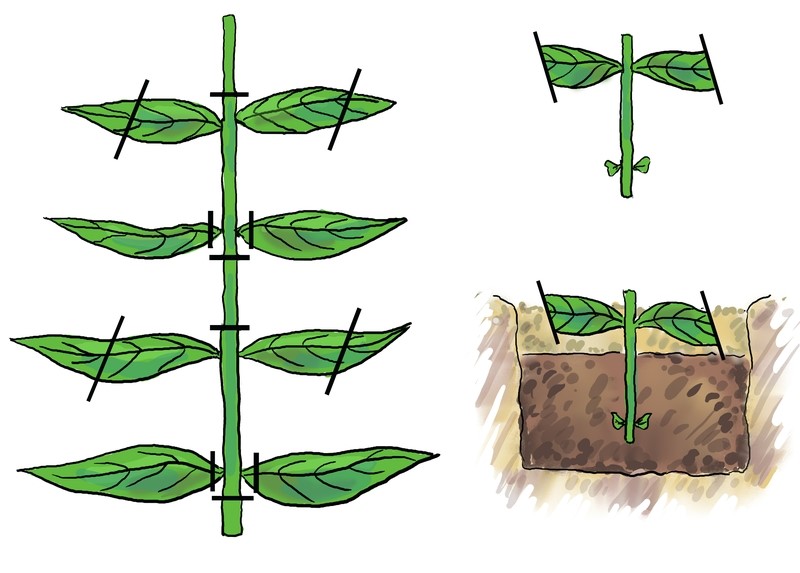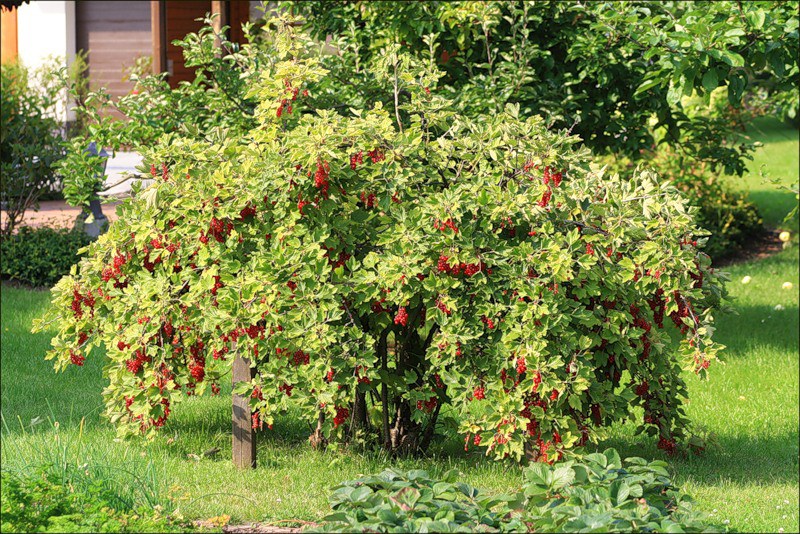Content:
The beauty of phlox fascinates with its simplicity and variety of colors. If you fill the flower garden at the summer cottage exclusively with phloxes, they will look very elegant and festive. These flowers are annuals and perennials, creeping and bush, paniculate and spherical, in the form of a herbaceous plant and a subshrub. All about how phlox reproduce can be found in this article.
Planting and leaving
They easily endure winter frosts, are not very demanding on soil and living conditions. But still they have some whims. The phlox root system consists of many thin shoots and is located in the upper layers of the soil, so stagnation of water in these layers is not desirable. It is better not to plant phloxes next to larger shrubs and trees, they will shade flowers from the sun.
The composition of the soil is not very important, but they feel best on loams - moderately loose and moist, with a neutral reaction and a full range of nutrients.
A branched, dense root system needs watering. If watering is irregular or insufficient, the flower caps will be smaller and fewer. To prevent this from happening, watering is necessary often. The soil should always be damp, but moisture should not stagnate. In the absence of rain, in dry hot weather it is necessary to water daily and abundantly: about one and a half buckets per square meter. Watering at the root. After moistening the soil, it must be loosened. Mulching the soil will help to delay excessive evaporation. As mulch, you can use:
- humus,
- peat,
- bark of trees,
- grass,
- hay.
The development of the plant is divided into several periods. During these periods, fertilizers are needed with a different composition of nutrients:
- Increased growth of green mass - stems and leaves, plants need nitrogen. Phlox can be fed with nitroammophos, wood ash infusion or mullein infusion;
- The appearance of buds... At this time, phloxes need less nitrogen (otherwise they will fatten and may not form flowers), but you need to add potassium substances. In mid-July, potassium sulfate and urea are introduced (spraying on the leaf with a weak solution);
- Preparing perennial phloxes for the winter period... They need to accumulate the required amount of nutrients in the root system. This requires phosphorus. Therefore, in the first half of July, it is necessary to add superphosphate to all other dressings. During the season, the plant needs to be fed with phosphorus 3-4 times. The last time feeding should be done in early September and is best in combination with potassium (phosphorus 20-22 g, potassium 10-12 g).
Phlox must be pruned throughout the season. Remove faded, dried or diseased plant parts. In the fall, you need to cut it at the root.
Rejuvenate phlox by chopping off the lateral roots. To remove pests or remove a disease-damaged area of the root, open it, carefully removing all the soil from it. This is done only with diseased plants, all the rest are transplanted by transshipment.
Phloxes begin to "wake up" very early in spring, and the root system begins to work earlier than other plants.The best time to transplant is early autumn or early spring (when the soil has just thawed).
How to propagate phlox perennial and annual
With annuals, everything is clear, they reproduce by seeds. It is better to purchase them in specialty stores, since hybrid plants may not transfer their qualities through the harvested seeds. But about how to propagate perennial phlox.
How to propagate phlox by dividing a bush
This method consists in the following: the bush must be removed from the soil, the roots and root collars must be cleaned of soil residues. Next, very carefully with your hands to disassemble the intertwined roots coming from each neck, if possible, without injuring them. A knife is used only when the hands cannot make out the rhizome. It is necessary to cut it only where the root collars have grown together, and divide the rest by hand. Each separated fragment must have a growth bud or shoot.
Many novice gardeners are wondering: when to divide phlox? You can divide the bush both in spring and autumn.
In the spring, phloxes begin their vital activity very early, so if it is decided to divide the bush in the spring, then you need to carry it out as soon as the snow melts and the soil thaws a little.
With the autumn division of the bush, the most optimal is the end of August and the beginning of September. During this period, buds are already formed on the root collars. With this division of the bush, next year phloxes will already delight you with abundant flowering. In exceptional cases, the bushes can be divided in the summer, but during this period the plants take root worse.
The old bush can be divided using the left root: the bush is cut in half right in the ground and one part is removed, and nutritious soil is poured into the resulting space. The removed part can be divided and put in new places. After a couple of years, it is again possible to separate half of the old bush, but on the other side.
With good care, phlox can grow without transplant for about 10 years. But still, practice shows that the bush must be divided after 5-6 years, otherwise the flowers become smaller.
How to dilute phlox with layering
The stem you like is bent to the ground and sprinkled, tamped with soil. You can do it differently. A strong shoot (so that it does not break) is covered with earth, as high as possible. After a while, young roots will appear on the branches. A little later, such a root with processes must be carefully separated and planted in a prepared place.
Propagation by cuttings
Before the first buds begin to appear, it is necessary to cut off several stems with leaves and place them in a nutrient mixture, which includes: perlite, peat, vermiculite or sand. Cuttings are placed in this mixture and constantly moistened until the seedlings are planted in the ground.
You can cuttings in the fall, but then the lower parts of the stems are not suitable, they are already beginning to lignify and will not take root. At this time, you need to take the upper parts of the stems.
For reproduction in this way, the stem is cut into several parts so that each has 2 nodes. Cut so that one cut is immediately below the knot, and the second one centimeter above the top knot. Cutting the cuttings is best in inclement weather.
Cuttings are planted in rows in the nutrient soil at a distance of 10 cm from each other. In a row, cuttings are planted at a distance of 5-6 cm. After about a month, the cuttings will give roots, and shoots will appear in the depressions of the leaves, which will then develop into stems. With proper cuttings and proper care, phloxes can bloom by autumn.
It happens that they will give a beautiful bouquet of these flowers, and the question arises: how to root phlox? You can also cut from stems with flowers. In this case, the cuttings are cut from the middle and planted in nutrient soil in a greenhouse to form roots.
In the middle of summer, stepchildren form in phlox leaves. They can also be used for grafting. They are planted directly into the ground.
Root cuttings. This method is only used if the stem is infested with nematodes. To do this, the infected plant is dug up, large roots are selected, cut into pieces of 4-7 cm and placed in wet sand. Store in a damp state in a cold room. At the end of February, the plant is transferred to a warm place to stimulate growth and get used to the light.
Reproduction of phlox by seeds
In many perennial phloxes, seeds can ripen in the bud. To prevent self-seeding, they must be removed in time. As soon as the capsule turns brown, this is a signal that the seeds are ready. They can be collected and planted in the ground. Plants grown from seeds grow better and adapt to local conditions. The only disadvantage when planting with seeds is that the plant may not retain the characteristics of the original variety. That is, if plants of different colors grew nearby, then the flowers can be pollinated.
Thus, phlox can be propagated in different ways and everyone can choose the most convenient for themselves. Knowing how annual and perennial phloxes multiply, you can make a bright flower garden in your yard without much effort.
